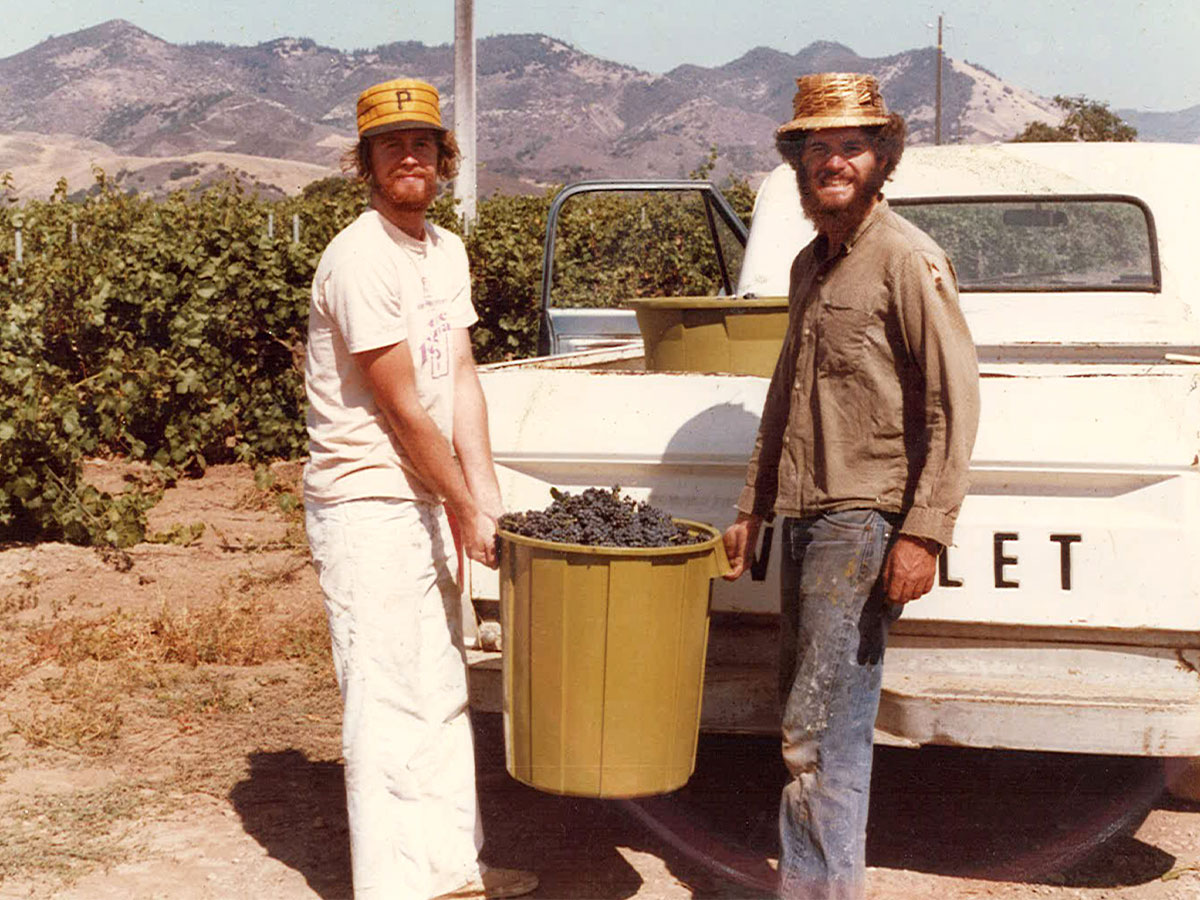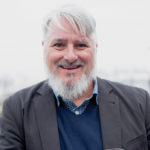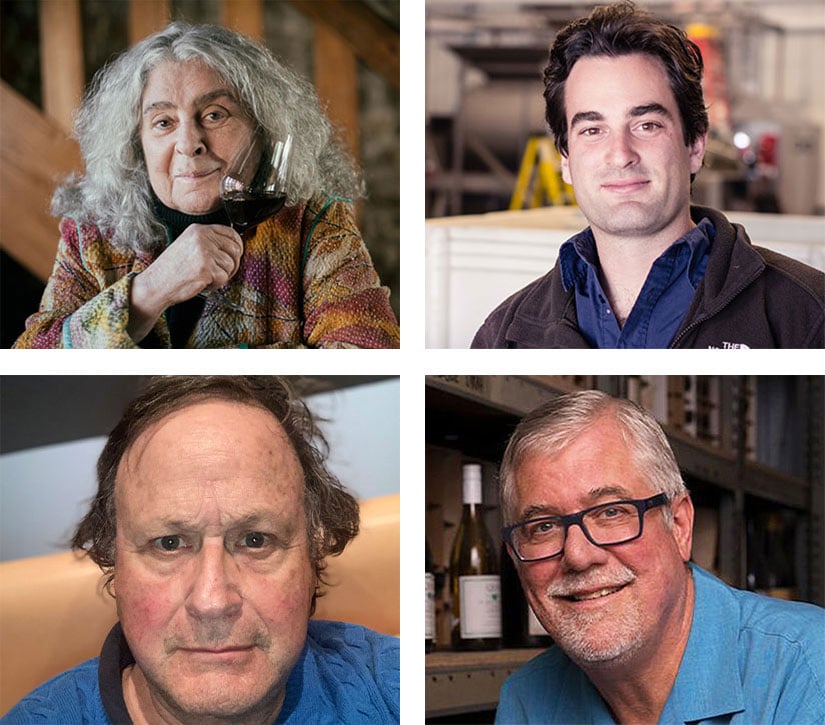

Clockwise from top left: Becky Wasserman, Gavin Chanin, Bob Lindquist and Mel Knox on the rise of Santa Barbara County wine and its most charismatic leader.
James Alexander Clendenen was born in Akron, Ohio, in 1953, and came to California to attend the University of California Santa Barbara, with the intention of joining the diplomatic corps. A trip to France in his junior year shifted his attention to wine. By 1978 he was working at Zaca Mesa Winery in Santa Ynez, one of a handful of new wineries in Santa Barbara County.
Bob Lindquist: I worked for John Rehm, who was the son of the owner of Zaca Mesa, at a wine and food shop in Los Olivos. I got hired on the first of January, 1979, my first workday was January second. And on January third Jim came wandering into the store to meet me and talk about wine. We realized we had a bond. When I lost my job at the wine shop I got hired at the winery right away.
Mel Knox: I was a wine buyer for a store in San Francisco called the Wine & Cheese Center. The owner was from Santa Maria, and his father had been the Agricultural Extension Agent for Santa Barbara County, so he had a thing for the wines. That’s how I met Jim. He was a combination of cellarmaster and sales manager at Zaca Mesa; Adam Tolmach was the lab guy, and Bob Lindquist was the tour director. Pretty soon after that, Jim started coming by the store to sell wine.
Gavin Chanin: Even back then, Jim was an imposing figure. In 1979, he hired my father to be the truck driver at Zaca Mesa. My dad will never forget the day he showed up at the winery to ask for a job. Jim, who had zero patience for tourists, came barreling out of the winery in white painters’ paints, and a waffle shirt covered in red wine. “He was terrifying,” my dad recalled, “but once he saw I had a passion for wine, he softened—and we became lifelong friends.”
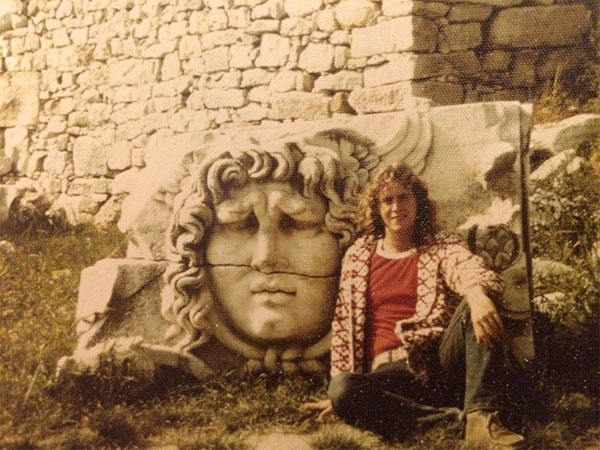

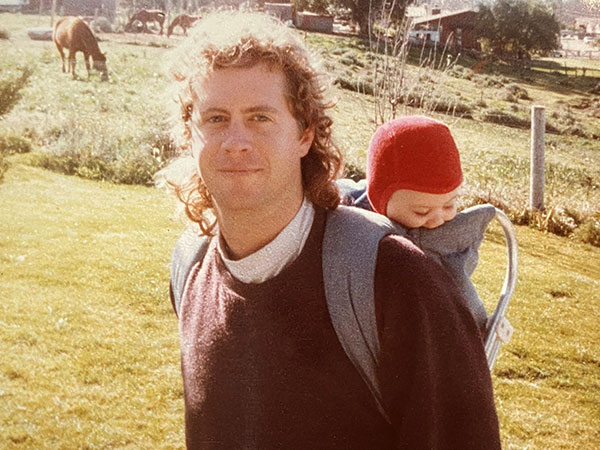

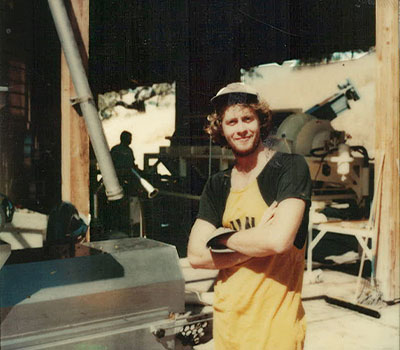

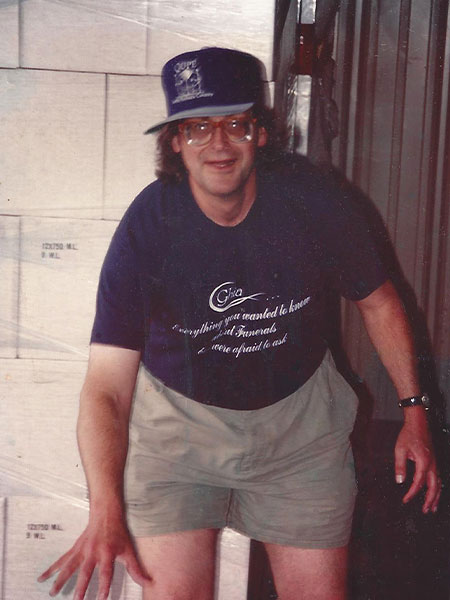

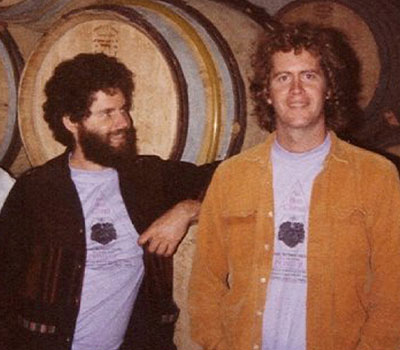

Lindquist: We were serious wine geeks—especially Jim, and Adam and I—we were seeking out wines. It was the portfolio of Kermit Lynch more than anyone at first, but also places like Corti Brothers in Sacramento, Wally’s in Los Angeles and Mayfair Wines, Chris Whitcraft’s store in Santa Barbara. We met two or three times a month, trying to get an idea of what was good and what wasn’t, to get at a winemaker’s stylistic choices.
I would call us all Europhiles—we all liked balanced wines, we all liked acidity, we all liked the freshness that you get from French wines in particular. That’s really kind of what set the path. Jim was the leader of the group; Jim’s personality took over, right off; Jim was relentless in his pursuit of learning about what makes this Burgundy this way, what makes this pinot noir this way.
Two years into his stint at Zaca Mesa, Clendenen went to France to work harvest in Burgundy. Through Mel Knox he was introduced to Becky Wasserman, then an exporter of wine and a barrel broker, who was babysitting a large house in Mavilly-Mandelot, outside of Beaune. She put up Clendenen and Adam Tolmach for several weeks, connecting them with winegrowers in need of harvest help.
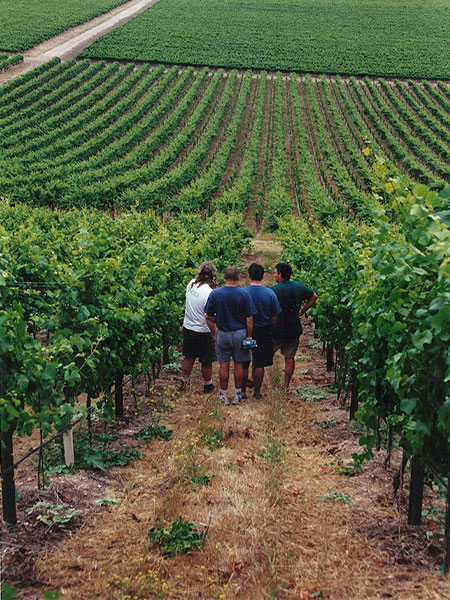

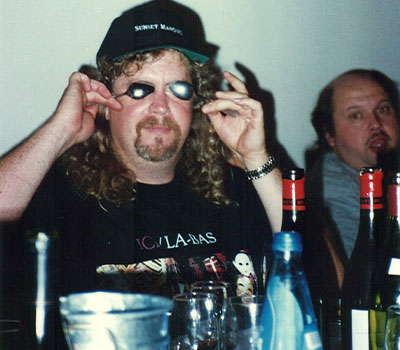

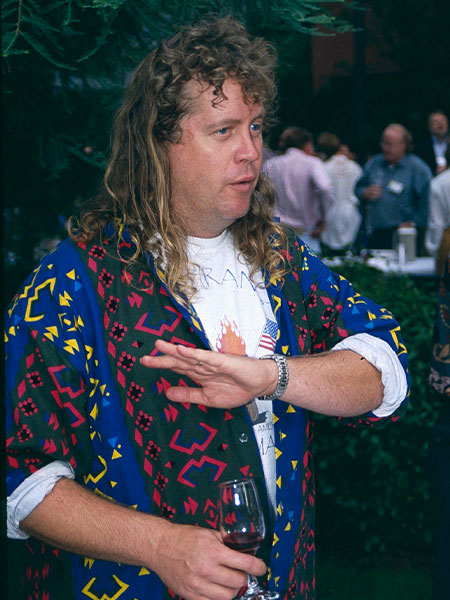

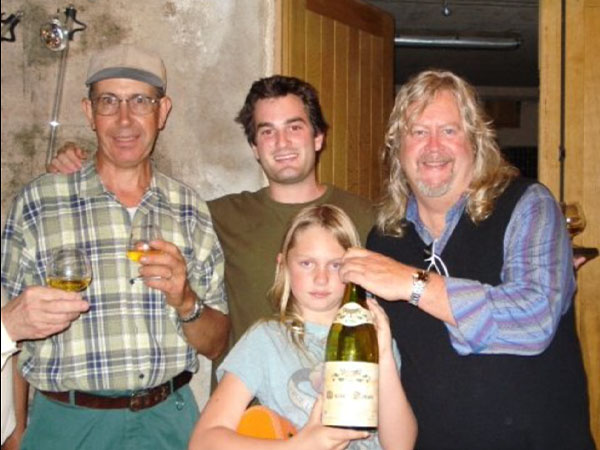

Wasserman: I set up the appointment with Gérard Potel [at Domaine de la Pousse d’Or]. Gérard probably gave him a tasting, showed him some of the vineyards, and discussed quietly his ideas of vinification as he would with someone younger. Gérard was pleasant but more gruff than expansive—a very poised man and quiet. Jim was neither one. He was young, with this incredible energy—you could feel it. There was a willingness to try anything, it was as if he wanted to absorb as much as he could and then get going.
Chanin: It is no surprise that before he discovered wine his dream was to be a State Department diplomat—a job he probably would have been pretty good at (minus his rebellious nature). Jim talked to everyone and somehow ingratiated himself with the notoriously elusive Burgundians. They embraced him; they taught him about open-top fermentation, whole clusters, malolactic fermentation in small barrels, limited racking and zero filtration.
Knox: He was a sponge. He had an acute sense, an ability to figure out what was happening and what wasn’t happening and adjust.
Wasserman: When Jim came back from that visit [at Pousse d’Or] you could tell that something had transpired. Certainly, the discovery of the Burgundy Jim wanted to make would have contributed to it. I remember the way he looked. He wasn’t sitting back in an easy chair. He stood with his elbows to the side of his body; his whole body position was intense; it wasn’t relaxed. He kept repeating ‘I want to be somebody. Those are the wines I want to make, he said. I want to be somebody like Gérard.’
Knox: There were things that I think he drew from on that trip: He realized how important lees contact was, because Lalou [Bize-Leroy] would go on and on about it. Most American visitors would dismiss this like, ‘Oh, these French peasants. What can this woman in her Paloma Picasso t-shirt know?’ Whereas Jim was thinking, ‘She knows something, the wines are pretty good!’ I think that Jim’s obsession with lees contact is one of the reasons why his wines age so well.
When Clendenen and Tolmach returned from Burgundy in 1981, they came back with an explicit plan. “They wanted to be a Burgundian-modeled winery in Santa Barbara,” says Lindquist. The following year they founded Au Bon Climat, in what Knox describes as an old dairy shed, complete with milk tanks, which they employed for their early fermentations.
Chanin: To be clear, making great California pinot noir back then was absolutely an insane idea. Pinot noir at the time was a grape made by a handful of specialists. And even those producers who were making great wine struggled with consistency. On top of this, Santa Barbara was a fledgling wine region at best, and that is being extremely generous.
Knox: They started farming grapes at Los Alamos Vineyard, and made some very astute decisions. Jim was like, ‘Well, we’re looking for a cool climate. Look at what this woman has. She’s overcropping, and the wine sucks. If we could prune the vineyard back, it’ll turn out pretty good.’ And, you know, it did; I remember tasting the chardonnay and thinking, ‘My God, this is their first wine?’ So, they kind of took off.
He became obsessed with the texture of the wine. He valued that elusive complexity, what you get from a more complicated winemaking scheme and a wine that can age. Jim always used to say that if fruit was the most important thing in your wine, then your wine loses value every day. We used to think, ‘If you like fruit so much why not make a dry muscat. Why not make a riesling? What the fuck are you making chardonnay for?’
Clendenen and Lindquist would go on to be partners in a winery property at Bien Nacido Vineyard, where they made wines until Jim’s death in May (Jim Adelman, Clendenen’s longtime resident winemaker, will continue making the wines at Au Bon Climat.)
Lindquist: I left Zaca Mesa in 1983, and was kind of itinerant for a while. But in 1985, I met Bob Miller, of the Miller Family at Bien Nacido. He was interested in grafting over some syrah at Bien Nacido, which we did, and got the first crop in 1987. A couple years later, Jeff Wilkes, who worked for the Millers, came to me and said they were thinking about building a winery at Bien Nacido, and they wanted to align themselves with a young winemaker who needs a home, and they thought of you. Are you interested? And I said, ‘Yeah, of course.’ And since Jim and Adam were looking for a permanent home as well, I said maybe they could come along.
Located miles from any large town, the winery at Bien Nacido became an unlikely destination, a place that took you far out of your way. For this reason, Clendenen and Lindquist would invariably host lunches for their visitors. The lunches became a central part of any winery visit, with fifteen to twenty people around a long table, and many bottles of wine.
Lindquist: There were far too many great lunches to single out any one of them. We have entertained everybody from Jancis Robinson to Henri Jayer, Gérard Chave, Emeril Lagasse, Daniel Boulud, Johnny Apple, Alice Waters.
One of my favorite lunches was early on when Boulevard [in San Francisco] was a new restaurant. [Wine Director] John Lancaster brought his crew down to visit us. They probably got there at eleven a.m., and started lunch around one p.m. It was one of those days when Jim and I were kind of in a competitive spirit. There was a group of about a dozen of us, so we kept pulling out magnums, just one after another. I don’t think we finished up lunch until six o’clock, and they had to drive back to San Francisco that night. I don’t know how they did it.
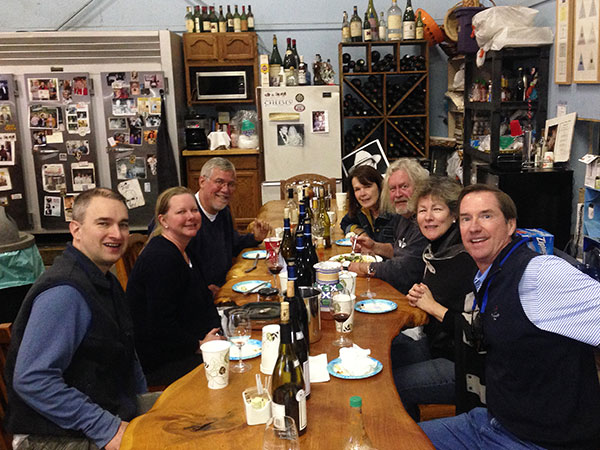

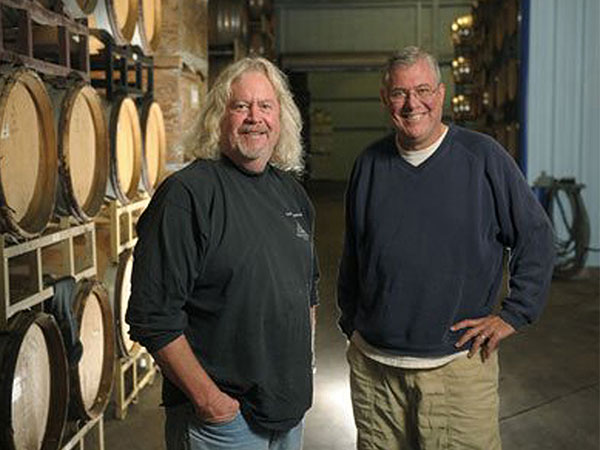

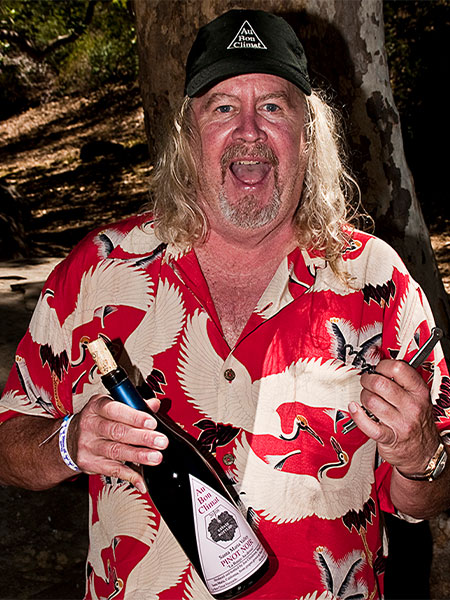

Gavin Chanin grew up in Los Angeles and when he graduated from high school in 2004, he recalls begging his father to help him get an unpaid internship at Au Bon Climat. Interns, according to Chanin, were ‘worked to death’ in their first year, but not only did Chanin survive, he would work the next ten years at Clendenen’s side, as an assistant to his mentor and friend.
Chanin: Jim did not like to be alone, and so we did everything together. We carpooled to the winery, went grocery shopping and got his car serviced. We spent almost every late afternoon in his pool with his kids and dogs.
At night, he would cook, and I would clean. Jim talked a mile a minute and was not known to stop. Our conversations were one percent basketball and ninety-nine percent wine. All day, every day. There were years of my life when I would work a full day at the winery and then spend another six hours at home talking to Jim about wines and vineyards.
Knox: You could go to Jim’s house for dinner and he would pull out three amazing wines that he made twenty years ago, that I didn’t even know about. At one point, he and Constellation must have been tied for the most SKUs in the wine industry.
It’s just hard to think of a grape variety that Jim didn’t make. If it was made in California, he made it. He made moscato, tocai friulano, aligoté, teroldego, he made—oh, what’s that tannic variety from southern Italy… Aglianico—I was never crazy about that one. Of course, his nebbiolo has gotten some acclaim.
Chanin: Personally, Jim gave me everything: an education, a career, a life passion, a craft. And the amazing thing is that my story is not unique. Jim mentored half of Santa Barbara County as well as people all over the world. Marcel Giesen, one of New Zealand’s most regarded winemakers, credited Jim with accelerating the quality of all New Zealand wine by twenty years after Jim visited in the 1990s and shared some of those tricks he learned. His passing is a loss for the entire world of wine.
Wasserman: I know one speaks about his generosity. He didn’t stop. He opened his arms wide and included people; he was not snobbishly selective. You could feel it even when he was very young, you could feel that force inside him. I’ve never forgotten that line: ‘I want to be somebody, I want to be somebody!’
Jim Clendenen left his winery and brands to his children, Knox and Isabel. He also bequeathed an ownership stake to both Jim Adelman, General Manager, and Enrique Rodriguez, Cellarmaster, who, together, share more than 60 years of experience at Au Bon Climat.
This story appears in the print issue of October 2021.
Like what you read? Subscribe today.

